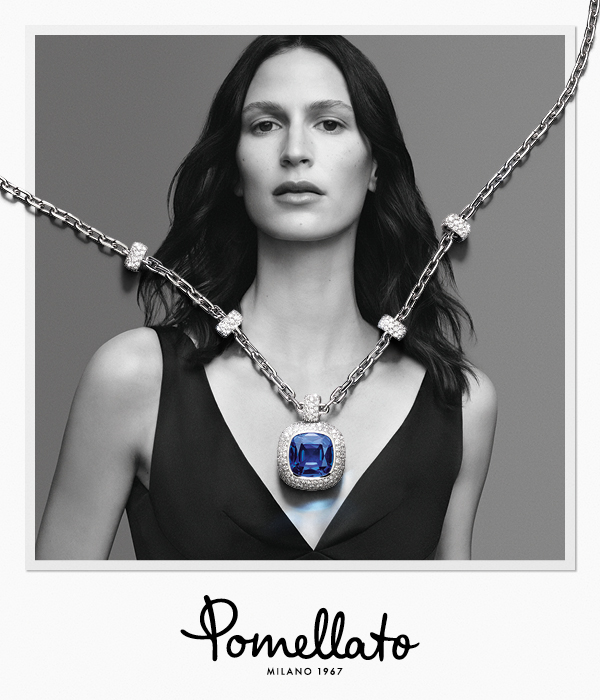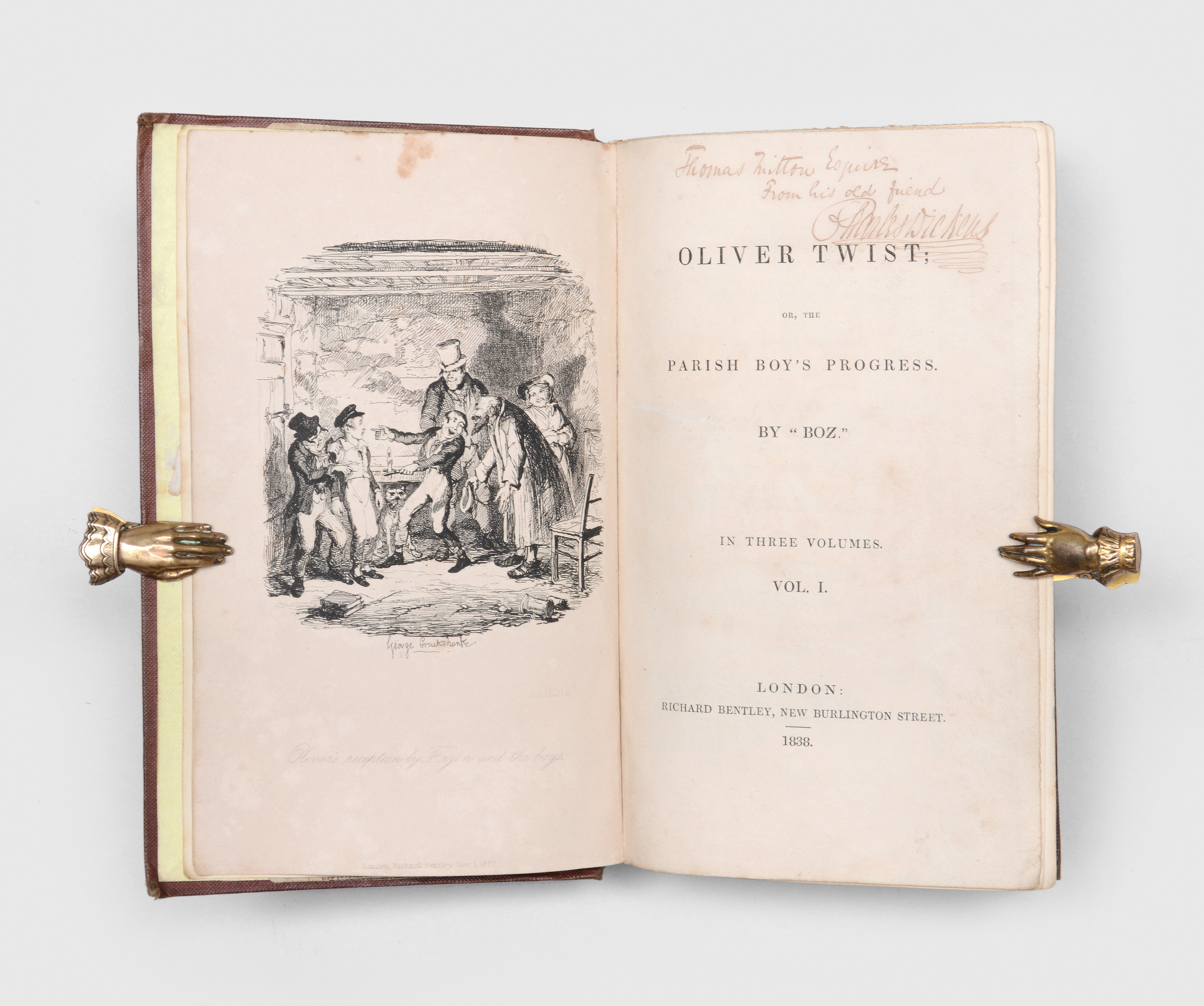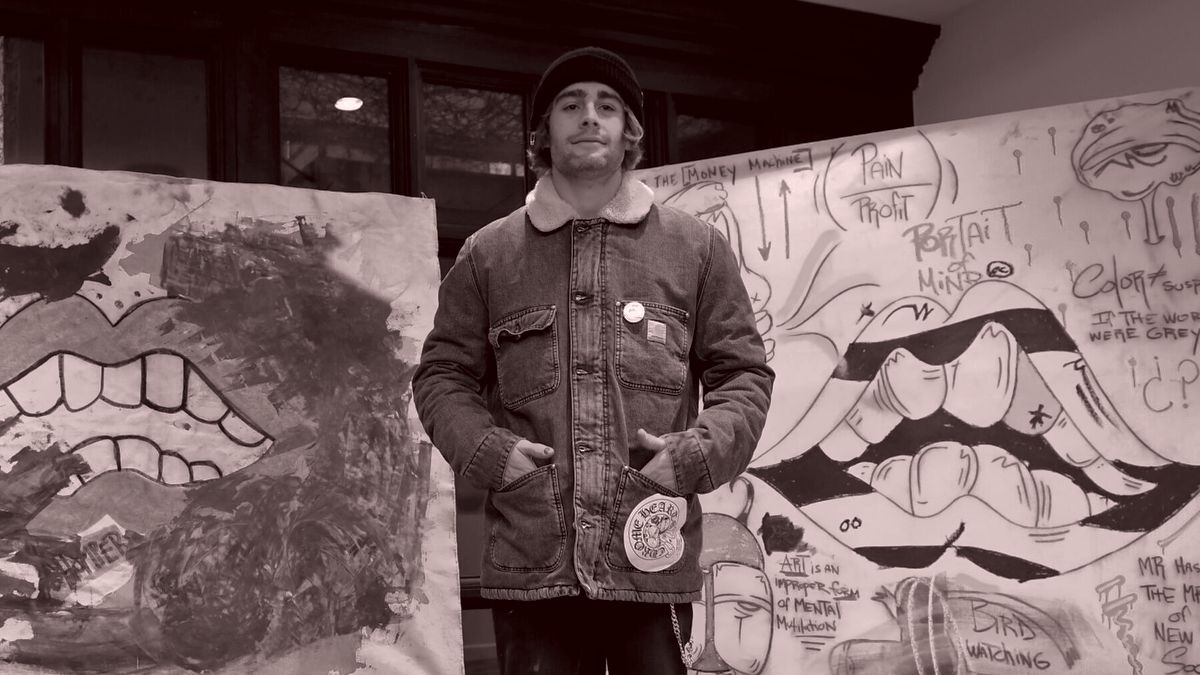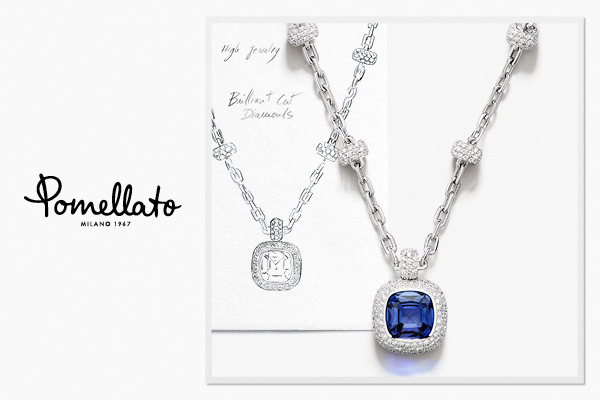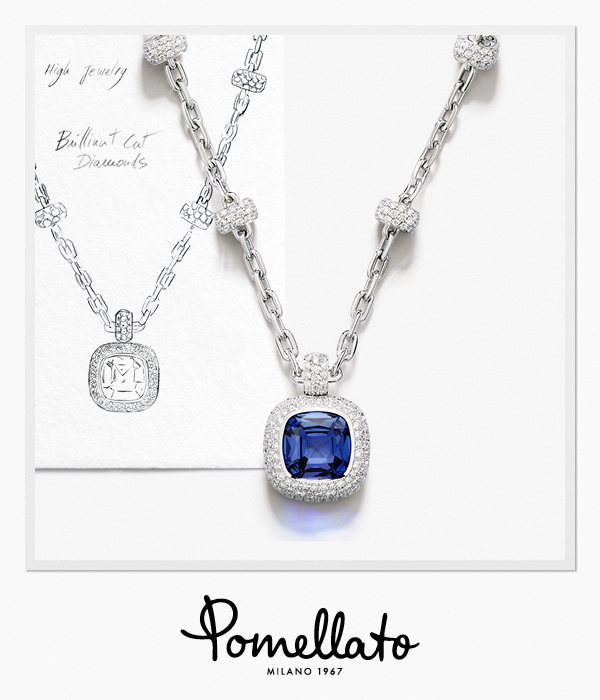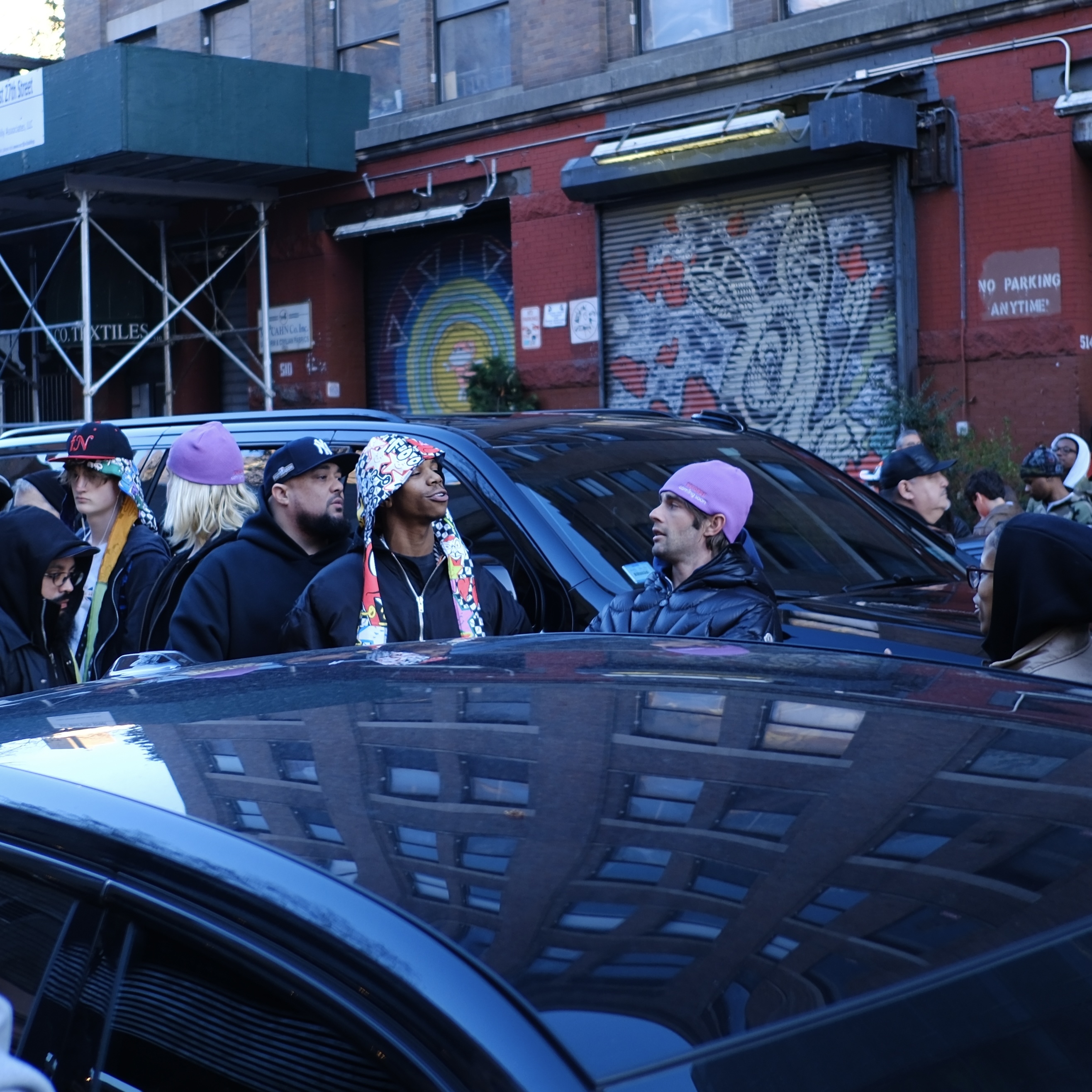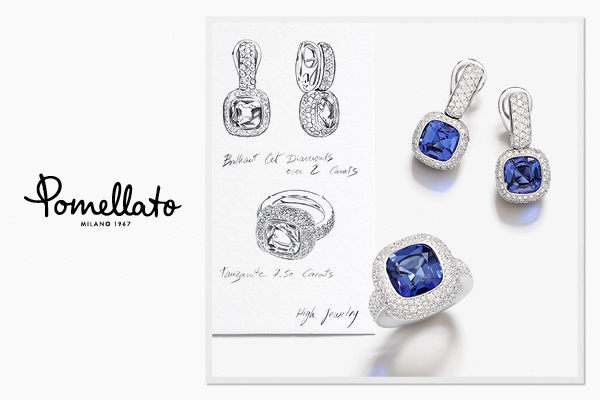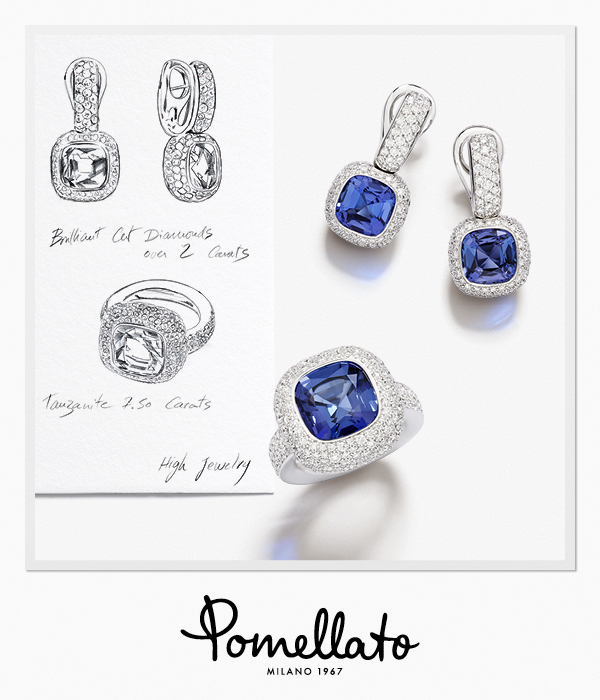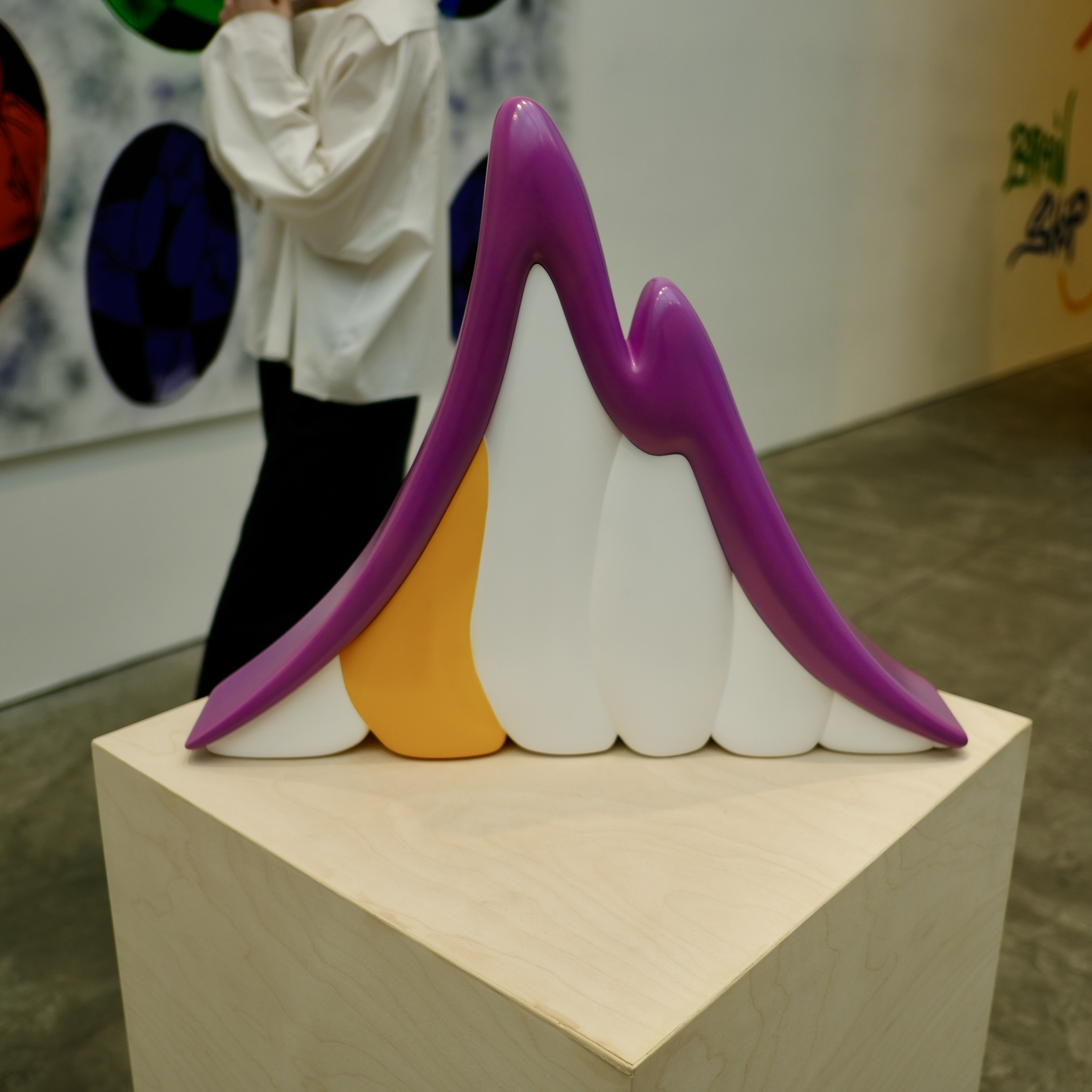Welcome back to Wall Power. I’m your host, Marion
Maneker.
Tonight, Julie Davich is trying out a new feature we’re calling Object Lesson, a quick look at an interesting piece you might have not come across yourself, as well as her regular gallery dispatch. I’ve got the story behind the flash mob street party that took place in Chelsea earlier this week, as former Chrome Hearts creative director Matt DiGiacomo launched his new brand, Taste, with a clothing drop and
gallery show at Ross + Kramer. Could this be a new consumer model at the convergence of art and street fashion? I’ll get into more details below.
But first…
|
-
One caveat about Hong Kong: In Wednesday’s Inner Circle email, I wrote that the Hong Kong sales cycle that coincided with Art Basel Hong Kong was the first time all three auction houses were able to hold sales simultaneously (or within days of each other) in the city. The folks at Phillips were quick to point out that their
sale was a smaller mid-season New Now sale. Their main sale for Hong Kong will be held in May. That won’t affect the analysis much, but we did want you to know Phillips has more in store this spring.
- Did we just witness the first art auction victim of Trump’s tariffs?: I got a note from a dealer on Wednesday night asking whether I thought Trump’s tariffs would apply to art. I honestly didn’t know the answer. But I wasn’t
terribly surprised to see an art auction seemingly collapse under the weight of the economic uncertainty. Swann Galleries’ regularly scheduled sale of African American art was moderately successful, except for the fact that none of the high-value lots found buyers. Several lots were bid above the estimates, but only one—a Hughie Lee-Smith painting—made a six-figure sale. Four other works, all estimated at the $150,000 level or above, failed to find buyers. I’m sure I don’t need
to point out to you how grimly fitting it is that Trump’s reckless act of domination would cause harm to Black artists first.
|
|
|
A MESSAGE FROM OUR SPONSOR
|
At the intersection of artistry and innovation lies Nudo, Pomellato’s most iconic creation. Each
Nudo piece is a miniature masterpiece, where design creativity, expert craftsmanship, and gemstone mastery meet. The Nudo High Jewelry collection embodies Pomellato’s unique vision of precious jewelry, combining the collection’s signature lightness and wearability with new levels of creativity and craftsmanship.
LEARN MORE
|
|
|

|
Julie Brener Davich
|
|
Object Lesson: Oliver Twist
|
Photo: Courtesy of Peter Harrington Rare Books
|
In honor of the 65th International Antiquarian Book Fair this weekend at New York’s Park
Avenue Armory, let’s take a closer look at one of the treasures on offer at Peter Harrington Rare Books: a first edition of Charles Dickens’ Oliver Twist for $470,000. As with most collectibles, the factors that affect the price of books are both objective (scarcity, condition, provenance, and notable associations or inscriptions), and subjective (desirability and cultural cachet). Oliver Twist isn’t just one of Dickens’ greatest works—it’s one of the most
famous English-language novels. This one is also in its original cloth binding, which is important to collectors of Victorian books.
Of course, not all first editions are created equal, as they can include different printings, or “issues.” This copy of Oliver Twist is a first issue, meaning it was one of the first copies printed in 1838, before any errors were corrected or changes made. The book, in three volumes, is also a “presentation copy,” meaning it was personally presented
by Dickens to Thomas Mitton, his friend and lawyer. It includes a handwritten inscription on the title page of the first volume: “Thomas Mitton Esquire, From his old friend, Charles Dickens.” In the rare book trade, chain of ownership is not as closely tracked as it is for artworks or antiquities, though the gallery knows this copy of Oliver Twist was once owned by the American steel executive Elton A. Hoyt II (1888-1955).
There are only four
other known presentation copies of Oliver Twist, one of which was gifted to the writer William Harrison Ainsworth and sold at Christie’s New York in 2008 for $229,000, against an estimate of $200,000. (Two presentation copies of A Christmas Carol sold in 2009 and 2010 for around $290,000 each.) “Dickens is one of the very few authors whose first editions have always been collectible,” Adam Douglas, senior specialist at Peter Harrington, told
me. Sounds like his works have collectors asking, “Please, sir, may I have some more?”
|
Gallery Hopping With Julie
|
Have you seen those A.S.M.R. videos of Japanese joinery on TikTok and Instagram? Ever
wonder what that carpentry is really like? If you’re in London, as I was recently, you can drop into Japan House on Kensington High Street to see the enchanting exhibition The Craft of Carpentry: Drawing Life from Japan’s Forests. The show pays homage to dōmiya daiku and sukiya daiku, Japanese carpenters who build the country’s temples and teahouses, respectively, using tsugite (straight joints) and shikuchi (angle joints).
Unsurprisingly, this
type of carpentry is a spiritual practice as well as a practical one, and the exhibition captures both the material elements of the craft—with its tools and technical drawings—and the concept of kami, or spirit deities, whom carpenters ask for forgiveness when they cut down a tree.
Two-thirds of Japan is forests, and since historically metal was often scarce, nailless wood joinery was an economical and practical choice. The exhibition details numerous joinery techniques, or
kigumi, ranging from basic to complex, and from architectural to delicate. A scale model of the buttress and roofline of a Japanese temple shows how carpenters construct the edifices to withstand both time and the elements, while an elaborate folding screen shows off intricate geometric and floral latticework. A full-scale model of a teahouse showcases the sophisticated craftsmanship that daiku use to combine materials like wood, bamboo, and stone. All that’s missing from the
exhibition is the tapping, sliding, and sawing sound effects.
|
|
|
Matt DiGiacomo, the former creative director behind Chrome Hearts,
hosted a wild gallery show in Chelsea this week that doubled as a streetwear drop for his new line, Taste, and highlighted his sculptures that were going for $60,000 a pop. Was this fashion, art, or something else?
|
|
|
Everyone knows the old joke about going to a fight and watching a hockey game break
out. Well, the other night, Matt DiGiacomo threw a street party in Chelsea—and a gallery show broke out. By the time I arrived at the Ross + Kramer gallery Tuesday night, there was an immense crowd on West 27th Street. Lined up four deep on one side of the street and running halfway down the block, hundreds were hoping to gain entry. In front of the gallery, a thick crowd of content creators worked the scene, interviewing each other and filming themselves for Instagram, TikTok,
and YouTube, and whatever other platforms influencers are using these days.
|
|
|
A MESSAGE FROM OUR SPONSOR
|
At the intersection of artistry and innovation lies Nudo, Pomellato’s most iconic creation. Each
Nudo piece is a miniature masterpiece, where design creativity, expert craftsmanship, and gemstone mastery meet. The Nudo High Jewelry collection embodies Pomellato’s unique vision of precious jewelry, combining the collection’s signature lightness and wearability with new levels of creativity and craftsmanship.
LEARN MORE
|
|
|
More crowds watched the spectacle from across the street. A Rolls-Royce squeezed
between the throngs and double-parked cars (a soft-grey Lamborghini among them), then a G-Wagon, followed by various massive black SUVs. One deposited a celebrity in the middle of the street. Everyone turned and started taking pictures as, I’m told, A Boogie Wit da Hoodie alighted to pose next to a ruggedly good-looking guy in his thirties wearing a purple beanie and a black puffer jacket.
|
A Boogie Wit da Hoodie and Matty Boy, on West 27th.
|
The guy in the hat was the night’s main attraction. Matty Boy, as DiGiacomo is known on
Instagram, is the former creative director of Chrome Hearts, where a pair of pants with crosses on them can sell on the secondary market for $20,000 or more. He was in the middle of the street to help keep the flock from overcrowding the entrance to his first New York art opening. DiGiacomo’s paintings and small sculptures reprising some of his signature motifs—a racing
checkerboard, graffiti spelling out his fictitious label Sex Records, and his chomper image of a sneering mouth with a prominent gold tooth—were selling out at $50,000-$60,000 a pop. But that’s not what drew the crowds.
In the back of the gallery, hidden by a false wall, was a makeshift store where DiGiacomo’s new streetwear line, Taste, was having its first drop. The robust line down the street led, eventually, to this backroom, where a lone clothes rack stood with a couple of $333
t-shirts. There were also hand-painted Vans at $1,000, DiGiacomo’s signature checkerboard pants at $1,750, and vintage Carhartt pants painted with flowers and the words “Speak through Relativity” for $7,500.
If all that was just too much, you could buy a set of press-on nails for $200 just to say you got something. For the boys with more street cred, DiGiacomo released a separate collab with the designer who bears the profoundly unappetizing name of Asspizza: It was a durag with
DiGiacomo’s chaotic signature print, which Boogie, the rapper, was also wearing. I saw some available for resale for $1,000 and up.
|
The gallery show, DiGiacomo’s third, was part of a two-pronged attack—masterminded by
Los Angeles collector Stavros Merjos and his gallerist wife, Honor Fraser—employing some of the best ideas about how to build an art career from the base of a particular kind of streetwear success. Some people will look at DiGiacomo’s art as jumped-up commercial content; others will see expressions of a broader sensibility bathed in consumer pop culture. So why not build a career on the broader platform of his proven success in fashion?
It’s not as easy
as the street party made it look. After wrapping up a spectacular career as a fashion designer, Helmut Lang tried, with limited success, to stage a second act as an artist. There’s no guarantee Matty Boy’s fame will easily resonate with seasoned collectors.
|
|
|
That said, Chrome Hearts—a high-end, highly collectible streetwear brand with punk
rock roots and heavy metal overtones—is a very good model for building a contemporary fashion and collectibles empire. Some of the value in DiGiacomo’s wearables comes from the same strategies—controlled releases, scarcity, and managed secondary markets—that art galleries use to create and maintain value for their artists. Founded on its leather and silverwork craftsmanship, Chrome Hearts flourished under its current owners, co-founder Richard Stark and his
wife, Laurie Lynn, to become a global brand with stores in the world’s luxury and hipster hot spots, like St. Barts and Aspen and Malibu.
Malibu was where the Starks first discovered DiGiacomo. He had been a friend of their daughter’s, and when they saw him making clothes on a large custom printer in a Malibu shop, they hired him. While apprenticing with the Starks, Matty Boy started making his own clothing mash-ups. The Starks put a few in their stores—and they sold out.
It was only a matter of time until he became creative director for the brand—and, in some ways, outgrew the brand himself.
|
Having succeeded in fashion, Matty Boy now has to make it in art. There’s some precedent
here: KAWS emerged as an important artist from his street art and collectibles career. Jeff Koons did something similar in the opposite direction, with a far different crowd: He issued a series of balloon dog plates that expanded into a broader luxury collectibles line. DiGiacomo, too, is launching his art on the back of, or in tandem with, his fashion success. Takashi Murakami had Louis Vuitton bags and plush toys; DiGiacomo has hand-painted
Vans and durags and A Boogie Wit da Hoodie.
|
Matt DiGiacomo, Untitled (Half Chomper) (2023)
|
The second prong of the strategy was the art itself: an extension of DiGiacomo’s visual
vocabulary onto canvas and into resin sculpture. The result elevates the clothes into the category of wearable art—as long as DiGiacomo can convince collectors that his images will resonate. The night before the Taste drop, Merjos had invited dozens of his uptown, high-end art friends to a cocktail party at the former carriage house renovated by Francois de Menil for Larry Gagosian, now the home of collector Sascha Bauer. The
point of the gathering was to introduce DiGiacomo to collectors and tastemakers in the art world. DiGiacomo charmed them, leading to sales of almost all of the paintings in the show—including one to a very prominent dealer.
More than one person at that cocktail party was wading through the crowd on 27th Street the next evening, clutching t-shirts and their teenage kids. Sure, buying a painting might have allowed them to skip the line. But it was also a bet that DiGiacomo’s cultural
currency will not only have staying power, but grow in the future.
|
Miami real estate entrepreneur Jorge Pérez and his wife,
Darlene, have donated a Joan Mitchell triptych to Tate in London. “This gift is one of the most important Tate has received,” Maria Balshaw, Tate’s director, said in their press release. “To place such a significant and valuable work in public hands is an act of incredible generosity.” That’s strong stuff.
Pérez is a major benefactor of Miami’s contemporary art museum, which bears his name. He and his wife have already decided that their
substantial art collection should be dispersed to various museums, including the Pérez. In publicizing the donation, Pérez spoke to the Financial Times and played up the value of the gift. He said his wife was “almost crying” when they decided to donate the 11-foot-wide work, which had required the couple to extend a wall in their bedroom to display it. I’m sure
the sentiment is heartfelt. But Pérez, Tate, and the FT are giving the impression that the painting is a major work and a deep sacrifice for the couple. The newspaper cites the top auction price for a Mitchell at $29 million. But the painting, Iva, from 1973, was bought at auction for $3.25 million just seven years ago. (The gift also includes works by African and African
diaspora artists like Yinka Shonibare, El Anatsui, Malick Sidibé, and Seydou Keïta.)
And with that, I will wish you all a good weekend. Let’s catch up again on Sunday night.
M
|
|
|
The ultimate fashion industry bible, offering incisive reportage on all aspects of the business and its biggest
players. Anchored by preeminent fashion journalist Lauren Sherman, Line Sheet also features veteran reporter Rachel Strugatz, who delivers unparalleled intel on what’s happening in the beauty industry, and Sarah Shapiro, a longtime retail strategist who writes about e-commerce, brick-and-mortar, D.T.C., and more.
|
|
|
Need help? Review our FAQ page or contact us for assistance. For brand partnerships, email ads@puck.news.
You received this email because you signed up to receive emails from Puck, or as part of your Puck account associated with . To stop receiving this newsletter and/or manage all your email preferences, click here.
|
Puck is published by Heat Media LLC. 107 Greenwich St, New York, NY
10006
|
|
|
|



